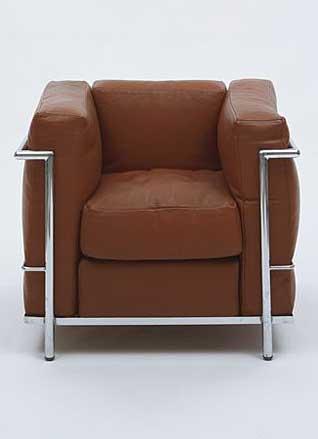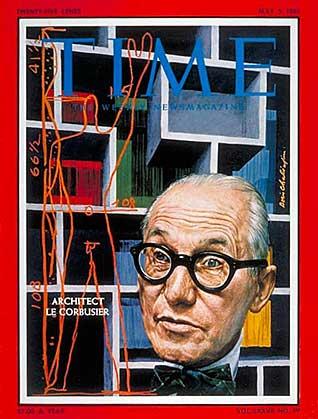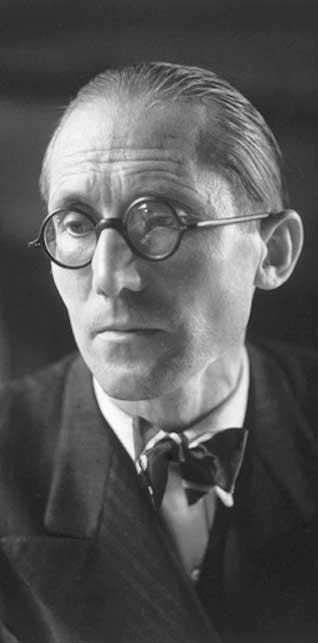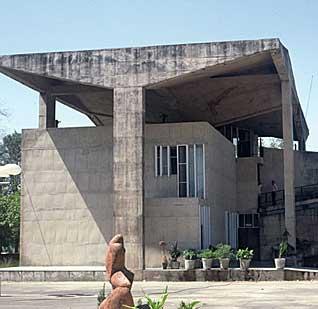Architecture
Punjab's Heritage
on the Auction Block
by K. S. SHEKHAWAT & KHUSHBOO SANDHU
From a Report by K. S. SHEKHAWAT:
Christie's memorabilia sale of furniture by Le Corbusier and his cousin, Pierre Jeanneret, debuts next month at the Rockefeller Center, New York.
[Charles-Edouard Jeanneret, who chose to be known as Le Corbusier (October 6, 1887 - August 27, 1965), was the visionary architect of Chandigarh, the city created as Punjab's new capital after it lost Lahore to Pakistan, as a result of the partition of India in 1947.]
The art auction market may have softened a little bit in the recent past - even though both Christie's and Bonham's are claiming record high prices for some artists at their sales this week - but it hasn't stopped the interest in Indian art from stretching out to include some very unusual collectibles.
Coming up on June 5, 2007 is an auction, at Christie's, of "furniture and objects sourced from the city of Chandigarh".
Not quite a house sale, the 112 lots - not all of them from Chandigarh - include works by architect and designer Le Corbusier and Pierre Jeanneret, both of whom were involved with the building of the new capital of the state of Punjab in the 1950s. The collection that will be auctioned by Christie's comes from Chandigarh's government offices and private residences.
What is noteworthy is the way some of these objects have made it to the auction. While the provenance of some is private, as the items come from the staff of those employed by Le Corbusier and Jeanneret, the origins of fixtures and furniture from public buildings are more interesting.
While some of it may have been moved out as part of a natural process of tendering for newer replacements in government offices or organizations, questions might still be raised on how furniture that has a value attached to it in terms of its designers, was allowed to leave the city at all.
The results of the auction will, no doubt, be closely watched in India where there is limited furniture that has been produced by well-known architects, designers or even furniture manufacturers.
Prime among those whose work is part of official India is that designed by Edward Lutyens and Charles Baker in the formal residence of the President of India. For the most part, offices and residences have been furnished with copies of catalogue designs by local carpenters.
A number of the palaces, however, had ordered furnishings from the Continent, though often these never made it to India, as ships and factories in the first four decades of the 20th century were bombed, and following independence, such orders ceased altogether.
The degree to which these items attract attention, says an observer, could be an important pointer to growing interest in other than just art from India, and if the bids are successful, could also create a fresh market opportunity within India itself.
On auction at Christie's are chairs, benches, sofas, stools and armchairs made from sycamore, oak, ash, rosewood, bamboo, teak and leather. There are tables - centre, library, conference - and desks, bookcases and screens, storage units and consoles, cabinets and daybeds, and Le Corbusier's wardrobes-cum-room dividers.
The architect had also designed wall lights using steel, chrome, brass and aluminium. Reserve prices appear not to be too steep, with most under $30,000, and only a few objects carrying a base price over $100,000.
[Courtesy: Business Standard]
From a Report by KHUSHBOO SANDHU:
The furniture in question was designed circa 1960 for both official and private buildings, including the Punjab High Court, Punjab Assembly and other government offices in Chandigarh.
Later, most of the furniture was sold at a pittance and what was left behind was dumped in storerooms, with the city residents unaware of its value.
The collection that is slated to go under the hammer includes a low table made of Indian rosewood, wrought iron and iron which is expected to fetch anywhere between $100,000 to $120,000. There is also a caned Indian rosewood chauffeuse designed for the General Hospital lounge; it is likely to get around $ 40,000. A concrete exterior light fixture is figured between $ 25,000 to $ 30,000.
The first Indian chief architect of the city, M. N. Sharma, said his countrymen usually do not care about their heritage, so such a neglect of the furniture is not an exception to the rule. "There is not much of it left in the city. No one paid any attention to it here, but foreigners attach great value to the furniture made by Le Corbusier and Jeanneret," said Sharma.
In fact, this furniture was auctioned and bought by foreigners, especially the French, at extremely low prices. The Principal of the Chandigarh College of Architecture, Rajnish Wattas, declared that after he took over the post, auction of furniture from the college was stopped. The Union Territory Administration then constituted a three-member committee to locate the furniture present in the city. [Chandigarh now serves as a joint capital for both Punjab and Haryana, and is administered as a "Union Territory".]
Wattas, who is also a member of the committee, said, "We are checking various buildings to look for any pieces of furniture that are still around. A complete scrutiny has to be made. A list of all furniture will be prepared and steps will be taken for its preservation." Sharma has also managed to preserve a chair by the famous French architect duo in his college.
Some of the furniture by them is still there in the city museum and the Assembly.
[Courtesy: Chandigarh Online]
Top photo - Chair designed by Le Corbusier. Bottom photo: Art Gallery, Chandigarh, designed by Le Corbusier. Third photo from bottom: Cover of TIME Magazine dated May 5, 1961.
Conversation about this article
1: Preeti (Chandigarh, Punjab, India), August 17, 2007, 7:34 AM.
Nice article. Some points I would like to bring to your notice: 1. Even after reading the article, only a few know what this furniture looks like. 2. It's only after these international dealers stepped in to purchase them, that we realized that it was important furniture. 3. Had it not been for these dealers and various auction houses, by now we would have destroyed the rest. 4. It is they who have made us realize its significance and importance. 5. We still have a lot left to preserve. 6. Other than give a few statements, we need to know what has been done. 7. Chandigarh city museum has only about 6 chairs on display. 8. IS THIS THE WAY TO PRESERVE? 9. By the way, the majority of the furniture made in Chandigarh has not been designed by Le Corbusier but by his cousin Pierre Jeanneret.






